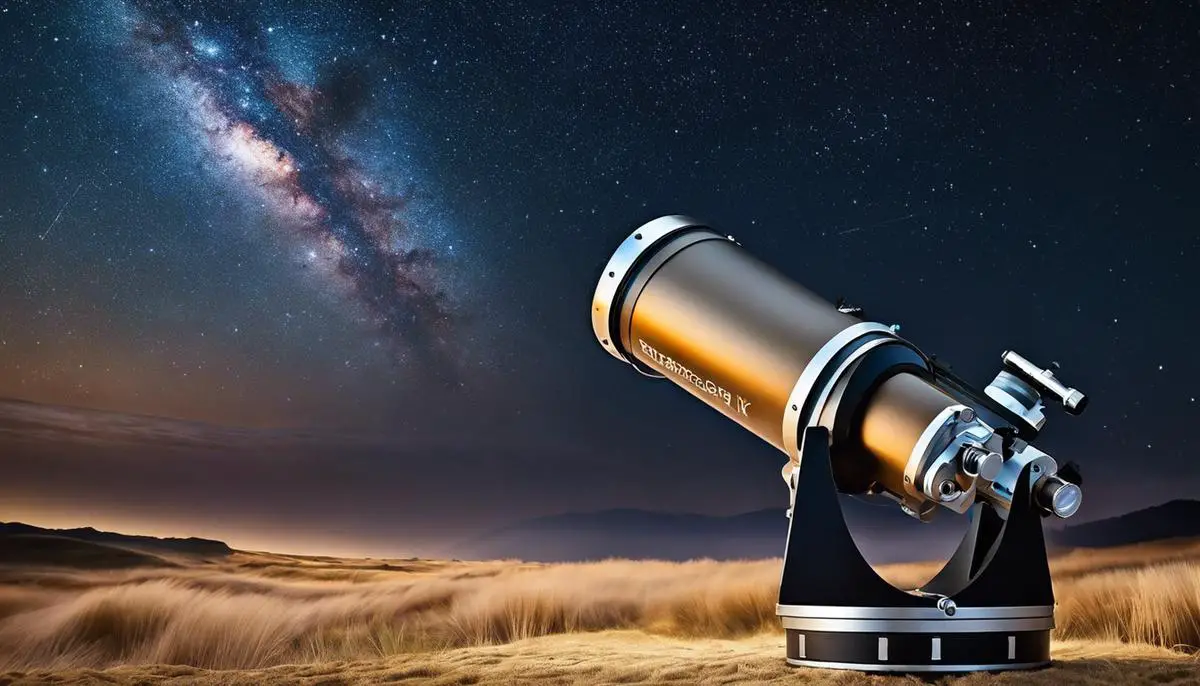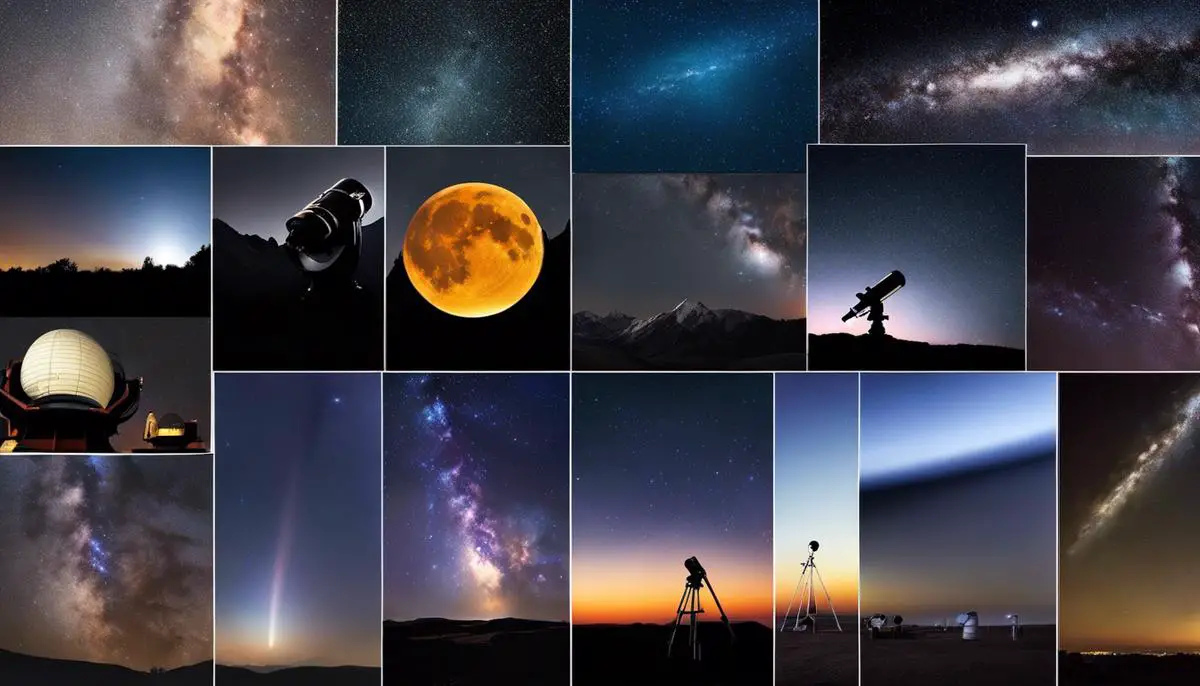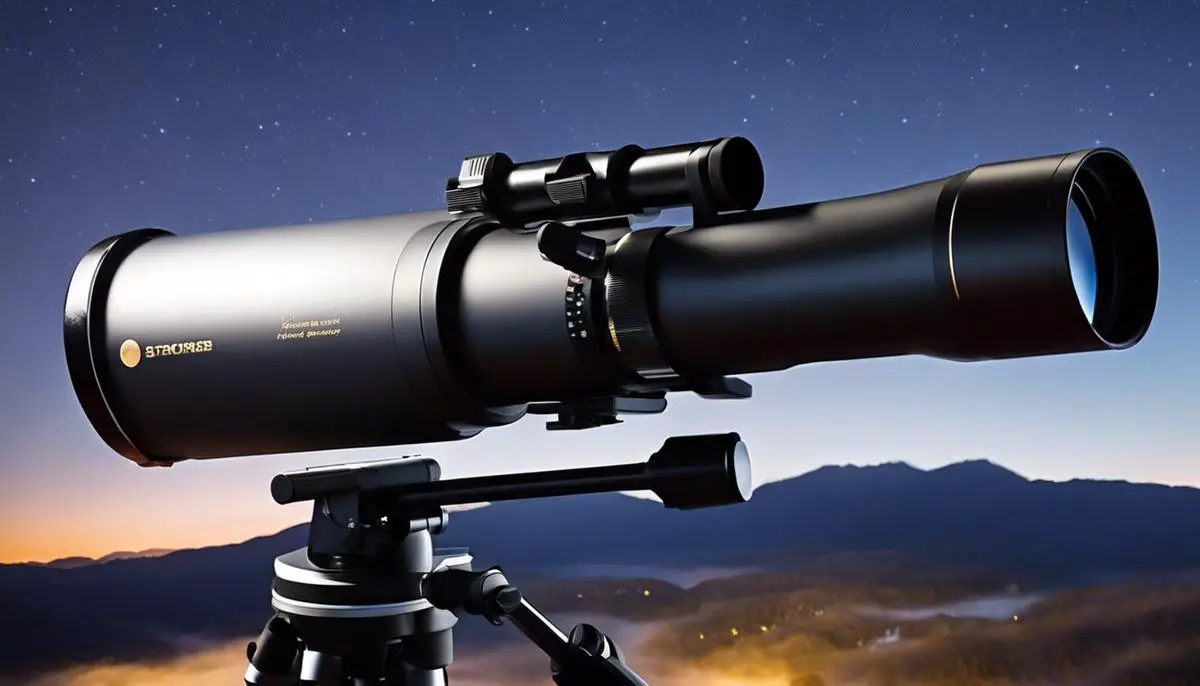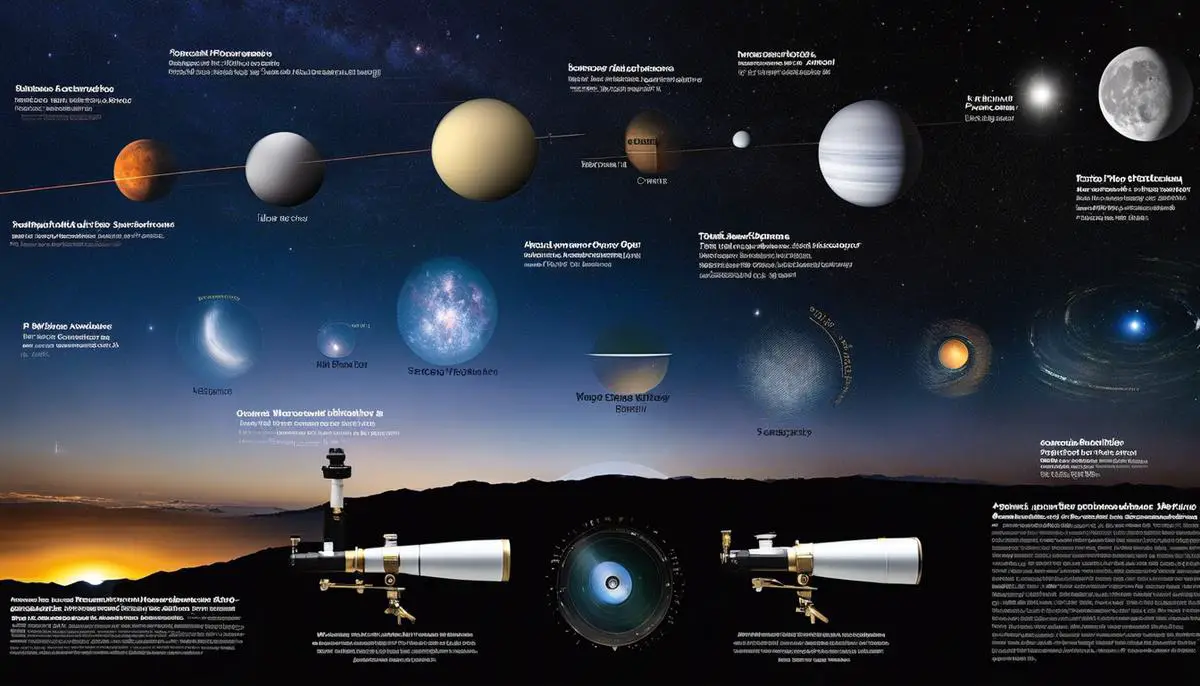As the cloak of night draws over the vast expanse of the sky, revealing a spectacle of twinkling stars, far-off galaxies, and distant planets, countless individuals find irresistible the invitation to explore these celestial wonders. The tool of choice for this intimate cosmic soiree is the humble telescope, a device that has allowed humanity to quench its thirst for cosmic exploration for centuries. Over the years, the telescope has evolved in complexity and accessibility, making it a valuable commodity for anyone keen on stargazing. In this discourse, we unveil the science and principles that govern the workings of telesciclopedia from its varied incarnations to the critical components that affect its performance. Additionally, we will set forth a comparative analysis of popular and highly-rated telescopes based on their features, performance, and cost. We will also be sharing useful tips and best practices that promise to enrich your sky-gazing experience.
Telescope Basics
The allure of the cosmos has captivated human cognition for millennia. The quest to fathom these celestial mysteries necessitates an essential instrument, the telescope. It serves as the principal bridge between us and the distant celestial bodies, illuminating our understanding and stimulating our curiosity. Delving into a basic understanding of telescopes unveils the secrets of your next fruitful stargazing experience.
Firstly, it is of paramount importance to differentiate between the two main types of telescopes – refracting telescopes and reflecting telescopes. Refracting telescopes utilize lenses to collect and focus light, whereas reflecting telescopes use mirrors. The choice between them rests heavily on individual preferences and objectives. For casual stargazers, refractors are often recommended for their ease of use and maintenance, while reflectors offer higher power and are popular among more dedicated astronomy enthusiasts.
The aperture, or diameter of the objective lens or mirror, is a chief factor governing a telescope’s performance. Larger apertures permit more light to enter, producing brighter and sharper images, therefore serving grandeur views of galaxies, nebulae, and other distant celestial bodies.
The focal length, a measure in millimeters that tells us how strongly the light is converged or “bent,” profoundly influences graphical quality and field of view. A telescope with a longer focal length will provide a narrow field of view, but magnify objects more. Conversely, a short one fast-tracks broader views, albeit with less magnification.
Undeniably, the chimerical union between a telescope and an eyepiece delivers the visionary capacity for stargazing. The eyepiece magnifies the image formed by the telescope. Remember, a lower millimeter eyepiece gives a higher power, while high millimeter eyepieces offer a broader viewing field but less enlargement. This balance is crucial, as excessive magnification may result in diminished image brilliance and sharpness.
Mounts, the physical support structure of a telescope, are of two primary types – alt-azimuth and equatorial. The former allows movement along the vertical (altitude) and horizontal axes (azimuth), lending ease of operation for beginners. Equatorial mounts, on the other hand, follow the Earth rotation axis, allowing smooth tracking of celestial bodies, which is crucial for astrophotography or long-term observation.
Lastly, never underestimate the importance of location and atmospheric conditions. Light pollution, causing an illuminated night sky, can severely hinder visibility of faint celestial bodies. Hence, darker, rural areas are often preferred for stargazing. Stable air, clear skies, and low humidity also contribute towards a fruitful astronomical observation.
In conclusion, understanding telescopes is not merely a feat of knowledge, but a rewarding pursuit of celestial curiosity. For every stargazer, the telescope remains an irreplaceable emissary, translating the distant cosmic whispers into a comprehensible language of enlightenment. With this guidance, may the mysteries of the cosmos be just a glimpse away.

Comparison of Best Value Telescopes
Continuing this illuminating journey into the world of telescopes, the following excerpt explores the top telescopes that offer excellent value for money, while adhering to principles of quality, performance, and functionality.
The first telescope providing worthwhile investment is the “Orion SkyQuest XT8.” At an accessible price point, this reflector telescope stands tall amidst its competitors, primarily because of its 8-inch aperture, which maximize light-holding capabilities. This stellar feature permits the user to view thousands of celestial entities, including galaxies, nebulae, and other deep-sky amazements at fine clarity. Moreover, the SkyQuest XT8 simplifies the telescope use with a paraboloidal mirror for strikingly sharp and bright images, and ‘Dobsonian’ style mount that provides an easy and stable provision for maneuvering.
The second telescope that offers a significant exchange for its price is the “Celestron NexStar 8 SE.” This telescope is a robust model from Celestron’s NexStar SE family that proves to be a trusty companion to both novice and seasoned star-gazers. Its automatic tracking feature, coupled with an extensive object database, simplifies the process of locating celestial bodies. This model exists within the realm of a higher price range, yet the features it provides make up for the investment, including an 8-inch Schmidt-Cassegrain optical system that offers high-definition views.
Coming to more affordable options, the “Celestron PowerSeeker 127EQ” is an exquisite testament to the blend of affordability and functionality. This Newtonian reflector telescope, with a 5-inch aperture, ensures ample light gathering for decent observational capacity. Despite the accessible price, there’s no compromise on features such as slow motion controls, erect image optics, and a 3x Barlow lens which triples the magnifying power of each eyepiece. The PowerSeeker 127EQ is undeniably an ideal choice for beginners eager to explore the cosmos.
For the lovers of fluid mobility and compactness, the tabletop reflector “Orion StarBlast 4.5 Astro” is a perfect fit. This reflector impresses with a wide field of view, transforming into an excellent tool for celestial and terrestrial viewing. It exhibits excellent performance with its diffraction-limited parabolic optics, lightweight frame, and two Explorer II 1.25 inch eyepieces. Comfortably placed in the lower price brackets, it offers a combination of comprehensive functionality with great ease of use.
In the domain of refractor telescopes, “Meade Instruments Infinity 102mm” astounds with great aperture size and superlative clarity. Its adjustable tripod and a high precision mount with slow motion controls make sky tracking joyfully effortless. The telescope comes with three eyepieces allowing diversity of magnification, vastly enriching the observational experience.
In conclusion, telescopes come in various shapes, sizes and costs. The top-rated ones offering maximum value for money are those blending superior qualities of performance, ease of use, and functionality, within an acceptable price range. As a tool to unlock the mysteries of the cosmos, the telescope continues to enthrall us with its ingenious capabilities. And with these recommendations, the decision-making process for potential astronomers becomes simpler, guiding them into an enriching lifetime of sky-gazing.

Tips for Better Sky Gazing
The optimum usage of a telescope heavily relies on its periodic maintenance and careful handling. This is integral to the device’s performance while ensuring its longevity. It’s like nurturing a high-powered eye that has the capacity to transcend earthly boundaries and plunge into the depths of the cosmos.
The delicacy of the optical components demands a meticulous cleaning regime, using lens cleaning solutions and microfiber wipes. Contact with bare hands or household cleaning materials can cause significant damage. Removing dust regularly from the optical elements is a must to avoid detrimental effects on image quality.
Alignment or ‘collimation’ of the telescope plays a dominant role in retaining the clarity of celestial images. Improper collimation leads to distorted images, degrading the overall observational experience. The user manual, or online tutorials, can guide users through this calibration process. Reflecting telescopes often require more frequent collimation than refractors due to their complex optical design.
Additionally, a telescope’s performance can be greatly enhanced by accessories such as filters and Barlow lenses. Moon filters, planetary filters, and nebula filters each serve specific purposes, from reducing glare and increasing contrast, to amplifying details of celestial objects. Barlow lenses, on the other hand, effectively double or triple the magnification of the existing eyepieces.
The jewel in a telescope’s crown is arguably the eyepiece, acting directly on the magnification and field of view. An assortment of eyepieces of varying focal lengths adds versatility, enhancing your viewing experience. Upper-range eyepieces improve resolution, while those on the lower range provide wider fields of view.
Equally important is the use of a finderscope or a red-dot finder, serving as a navigational aid in locating celestial objects. Some sky gazers prefer GO-TO controllers, which automatically guide the telescope to desired locations.
Telescope users also benefit enormously from integrating modern technology into their sky-gazing activities. Planisphere apps and astronomy software significantly aid in navigating the night sky efficiently. These technologies reveal the positioning of celestial bodies in real time, helping to plan viewing sessions effectively.
A significant enhancement to one’s telescope might be a motor drive or a computerized mount. While they bear additional costs, the precise tracking of celestial bodies they offer is undeniably appealing, especially for photography enthusiasts capturing long-exposure images.
In conclusion, the key to unlocking the full potential of your telescope begins with understanding the device’s intricate mechanisms, respecting its delicacies, and empowering it with complementary accessories. A telescope is more than a tool; it’s a personal portal to the cosmos. The reward is a deeply enriching, transformative experience that illuminates the wonders of our universe. As we gaze upward, we’re reminded that we’re not only observers, but active participants in this cosmic ballet.

Ultimately, the joy of stargazing lies not just in witnessing the unbridled beauty of the cosmos, but in understanding, appreciating, and sharing its profound mysteries. The right telescope, treated with care, used properly, and complemented with strategies like accurate positioning, effective weather adjustment, and the use of modern tools can transform this gratifying hobby into a lifelong passion. So whether one is just a beginner learning to traverse the skies, an intermediate honing their observational skills, or an advanced sky gazer in search of far-reaching cosmic phenomena, a good value telescope can make the journey not only rewarding but enlightening as well. In the timeless dance between the heavens and their observers, a telescope remains a vital partner, opening up worlds of discovery that extend well beyond our wildest dreams.
![]()
